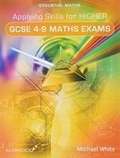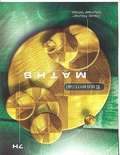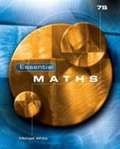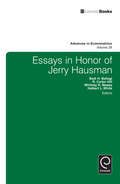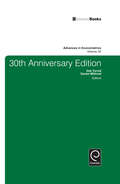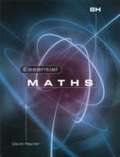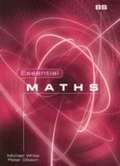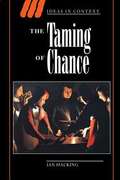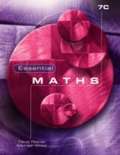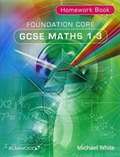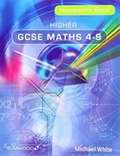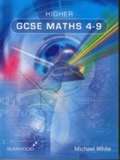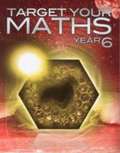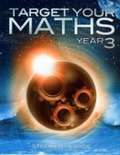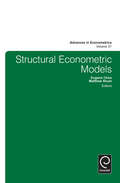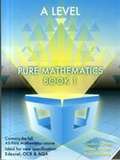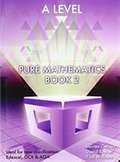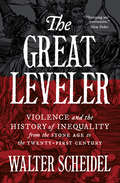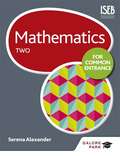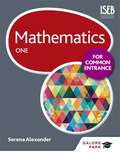- Table View
- List View
Essays in Honor of Jerry Hausman (Advances in Econometrics #29)
by Badi H. Baltagi Whitney Newey Hal White R. Carter Hill Tom FombyThe 'Advances in Econometrics' series aims to publish annual original scholarly econometrics papers on designated topics with the intention of expanding the use of developed and emerging econometric techniques by disseminating ideas on the theory and practice of econometrics throughout the empirical economic, business and social science literature.
30th Anniversary Edition (Advances in Econometrics #30)
by Dek Terrell Daniel Millimet Carter Hill Tom FombyThe 30th Volume of Advances in Econometrics is in honor of the two individuals whose hard work has helped ensure thirty successful years of the series, Thomas Fomby and R. Carter Hill. This volume began with a history of the Advances series by Asli Ogunc and Randall Campbell summarizing the prior volumes. Tom Fomby and Carter Hill both provide discussions of the role of Advances over the years. The remaining articles include contributions by a number of authors who have played key roles in the series over the years and in the careers of Fomby and Hill. Overall, this leads to a more diverse mix of papers than a typical volume of Advances in Econometrics.
The Taming of Chance (PDF)
by Ian HackingIn this important study Ian Hacking continues the enquiry into the origins and development of certain characteristic modes of contemporary thought undertaken in such previous works as the best-selling The Emergence of Probability. Professor Hacking shows how by the late-nineteenth century it became possible to think of statistical patterns as explanatory in themselves, and to regard the world as not necessarily deterministic in character. In the same period the idea of human nature was displaced by a model of normal people with laws of dispersion. These two parallel transformations fed into each other, so that chance made the world seem less capricious: it was legitimated because it brought order out of chaos. Combining detailed scientific historical research with characteristic philosophic breadth and verve, The Taming of Chance brings out the relations between philosophy, the physical sciences, mathematics and the development of social institutions, and provides a unique and authoritative analysis of the 'probabilisation' of the western world.
Structural Econometric Models (Advances in Econometrics #31)
by Eugene Choo Matthew ShumThis volume of Advances in Econometrics focuses on recent developments in the use of structural econometric models in empirical economics. The papers in this volume are divided in to three broad groups. The first part looks at recent developments in the estimation of dynamic discrete choice models. This includes using new estimation methods for these models based on Euler equations, estimation using sieve approximation of high dimensional state space, the identification of Markov dynamic games with persistent unobserved state variables and developing test of monotone comparative static in models of multiple equilibria. The second part looks at recent advances in the area empirical matching models. The papers in this section look at developing estimators for matching models based on stability conditions, estimating matching surplus functions using generalized entropy functions, solving for the fixed point in the Choo-Siow matching model using a contraction mapping formulation. While the issue of incomplete, or partial identification of model parameters is touched upon in some of the foregoing chapters, two chapters focus on this issue, in the context of testing for monotone comparative statics in models with multiple equilibria, and estimation of supermodular games under the restrictions that players' strategies be rationalizable. The last group of three papers looks at empirical applications using structural econometric models. Two applications applies matching models to solve endogenous matching to the loan spread equation and to endogenize marriage in the collective model of intrahousehold allocation. Another applications looks at market power of condominium developers in the Japanese housing market in the 1990s.
Essential Maths A Level: Pure Mathematics Book 1 (PDF)
by Lauren Gurney David Rayner Paul WilliamsContains the full AS Pure Mathematics course Ideal for new specification: Edexcel, OCR & AQA.
The Great Leveler: Violence and the History of Inequality from the Stone Age to the Twenty-First Century (The Princeton Economic History of the Western World #74)
by Walter ScheidelAre mass violence and catastrophes the only forces that can seriously decrease economic inequality? To judge by thousands of years of history, the answer is yes. Tracing the global history of inequality from the Stone Age to today, Walter Scheidel shows that it never dies peacefully. The Great Leveler is the first book to chart the crucial role of violent shocks in reducing inequality over the full sweep of human history around the world. The “Four Horsemen” of leveling—mass-mobilization warfare, transformative revolutions, state collapse, and catastrophic plagues—have repeatedly destroyed the fortunes of the rich. Today, the violence that reduced inequality in the past seems to have diminished, and that is a good thing. But it casts serious doubt on the prospects for a more equal future. An essential contribution to the debate about inequality, The Great Leveler provides important new insights about why inequality is so persistent—and why it is unlikely to decline anytime soon.
Busy Ant Maths — Year 1 Activity Book 1A (Busy Ant Maths Ser.)
by Jeanette Mumford Steven Wood Sandra Roberts Jo Power O'Keefe Elizabeth Jurgensen Peter Clarke Steve Evans Eva Sassin Louise Forshaw Gwyneth WilliamsonUsed in conjunction with the Teacher's Guide, Progress Guide and Homework Guide, the Busy Ant Maths Pupil Book 1A is the best way to ensure that pupils achieve all the learning objectives of the new Primary Maths National Curriculum. Collins Busy Ant Maths Activity Book 1A is packed with exciting activities to help build and develop the skills needed to be successful in Maths. Each page features lots of hands-on, highly visual activities with a low level of text to give pupils confidence in learning maths. Activity Book 1A contains: • fun activities to consolidate the objectives covered in the daily maths lesson • objectives at the top of each page so the child is in control of their own learning • space to record answers, providing structure to each exercise • simple text. • engaging, colourful graphics.
Mathematics For Common Entrance Two (PDF)
by Serena AlexanderReviewed by ISEB's Mathematics editor, Mathematics for Common Entrance 13+ One and Two books cover Common Entrance Levels 1 and 2 and introduce Level 3 for extension work. The content covered exceeds National Curriculum requirements at KS3 and lays the foundations for success at 13+. Book One can be used for Year 7, and Book Two for Year 8. Book Three (Extension) is ideal for Level 3 candidates, and those taking scholarship exams. - Endorsed by ISEB to ensure full coverage of the Common Entrance 13+ syllabus - Grasp new concepts easily with clear, concise explanations - Develop a deeper understanding with worked examples of all topics - Test understanding with varied and progressive exercises - Challenge higher ability pupils with extension questions - Improve exam technique with activities, tips and guidance Suitable for ISEB 13+ Mathematics Common Entrance exams taken from Autumn 2016 onwards.
Mathematics For Common Entrance One (PDF)
by Serena AlexanderExam Board: ISEB Level: 13+ Subject: Mathematics First Teaching: September 2015 First Exam: Autumn 2016 Lay the foundations for success in 13+ Common Entrance and scholarship exams with our stimulating and rigorous Maths course. Ensure a full understanding of KS3 Maths with clear explanations and worked examples, as well as end-of-topic exercises to monitor performance and progression. Book One of the three-part Common Entrance Maths course covers Level 1 and 2 topics of the ISEB 13+ Mathematics exam, and introduces Level 3 for extension work. Reviewed by ISEB's Mathematics editor, this course lays the foundations for success at 13+ and exceeds National Curriculum requirements at KS3. - Features concise explanation and worked examples to help pupils grasp new concepts - Tests understanding with varied and progressive exercises - Challenges higher ability pupils with extension questions - Suitable for ISEB 13+ Mathematics Common Entrance exams taken from Autumn 2016

